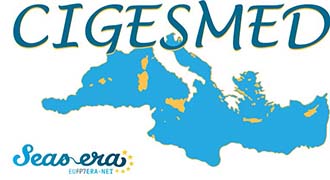Synthesis of the discussion about WP5: Citizen science network implementation
Presentations: Christos Arvanitidis, Sarah Faulwetter (HCMR, Heraklion)
Responsible of the WP: Christos Arvanitidis (HCMR, Heraklion), Jean-Pierre Féral (IMBE, Marseille)
The overall and the specific objectives of the WP5 were presented:
Task 5.1: Design of the structure and functioning of the citizen science network
Task 5.2: Implementation of the citizen scientist pilot project
The following issues were discussed:
The citizen science framework must be appropriately designed in order to engage as many interested parties as possible, that is all persons interested in the nature of the coralligenous habitat in the Mediterranean. These groups of users of the infrastructure must be mostly seeked in the sectors of agriculture (including fisheries), research and education. At the same time, efforts for the exploitation of the market potential, relevant to such a framework, should be made.
A citizen scientist pilot project will be implemented in order to mobilize all potential members of the network. This implementation phase will roughly involve the development of the electronic infrastructure, development of the network community, and the assessment of the project results. The philosophy behind these phases is that the Consortium builds upon previous experience gained in the context of EU funded projects (e.g. ViBRANT, see below).
The languages at which the infrastructure should be operating were discussed during the kick-off meeting. The following languages were proposed: French, Turkish, Greek, English, German and Russian. This assessment of the languages to be used was based on the nationality of the fun divers regularly visiting the places which are proposed as study sites
The main activities agreed upon for the first six months of the project are: (a) Evaluation of the conclusions derived from the discussions during the kick-off meeting: all partnering states must agree on the plan of the design and implementation of the citizen science pilot project and the development of the community network; (b) The design and development mode of the electronic infrastructure was also agreed during the kick-off meeting. As model for the pilot project the COMBER intitiative was adopted. A presentation on COMBER was delivered by S. Faulwetter during the meeting, in which all the important aspects of the citizen science (CS) project were discussed; (c) The leading partner (HCMR) has already submitted a plan for setting up the community of the citizen science network (see D7.1.1).
This WP is “by default” directly linked to all of the project’s WPS. It is stressed that any of the concepts/ideas produced in the other WPs may well have an implementation phase in the CS project planning and activity.
The impact of the project anticipated through this WP is high and should be analyzed in the following directions: (a) The “multiplier effect”: every citizen scientist involved can communicate the basic concept and ideas for the protection and conservation of the coralligenous habitat to other members of the society, not only in the partnering countries but also to others far away from the Mediterranean (e.g. Russia); (b) The involvement of the citizen scientists guarantees massive observational datasets coming back to the infrastructure and which could not otherwise be collected; (c) The involvement of the citizen scientists and the market potential around the activities of the pilot project provide a sound base for the continuation of the project’s activities after the end of its life.
